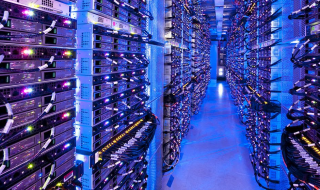
You spent unimaginable resources developing your supply chain, and you continue to expend energy to keep your supply chain running smoothly. Yet, no matter how big or small your business is, your supply chain is constantly at risk.
Knowing the sources of risk to your supply chain is a good way to keep your risk low and your profits high. In addition to using vendor risk management software, you should be well-versed in the typical types of risk facing most businesses, which include five categories from external and internal sources:
External Risks
No business is an island. The interactions you and your business have with the outside world are imperative for generating profit, but they also tend to introduce risk into your supply chain. Unfortunately, many external risks are well outside of your control. You shouldn’t expect to eradicate them entirely; instead, you should learn how to structure your supply chain to reduce the impact of the following risks:
Environmental Risks. “The environment” is almost everything from the climate of your region to the government to social structures and more. Environmental risks include things like terrorism, economic collapse, social upheaval, legislative change and natural disasters. There is no way to bring environmental risks to zero, but you can develop a stronger supply chain by selecting suppliers in more stable environments.
Demand Risks. Customer demand can ebb and flow, and it can do so rather unexpectedly. You should always be working to better understand your customers and their demand cycles.
Supply Risks. Many variables can cause disruptions in your flow of product, which can impact your ability to operate. You should pay attention to the availability of raw materials or the reliability of your suppliers to reduce supply risks as much as possible.
Business Risks. Just as your business could fail (knock on wood), your suppliers could close their doors due to financial instability, poor management or other internal issues. Again, getting to know your suppliers and using risk management tools should help reduce this external risk.
Physical Plant Risks. Even if your supplier’s business continues to operate, the physical location that processes your supplies can shut down due to issues like plant condition or compliance violations. If you can, you should try to visit your suppliers’ plants at least once to better understand your risks.
Internal Risks

Reviewing potential external risks, you might feel completely out of control of your supply chain. If that is the case, you might opt to focus on any lingering internal risks to your supply chain, which are much easier to identify and mitigate. You might need to change your current business processes to address the following risks:
Manufacturing Risks. Your own internal manufacturing processes can go awry. You should work to reduce the risk of disruptions to your internal operations, perhaps by selecting manufacturing plants in more stable regions or by perfecting your manufacturing processes.
Business Risks. It doesn’t take much to topple a business, so you should be careful to identify and shore up weaknesses within your business’s structure. You should be especially careful with regards to selecting personnel, managing staff, reporting and other processes that can directly interfere with supply chain productivity.
Planning and Control Risks. Ineffective management can make inadequate assessments that lead to poor plans. When risk is built into a business’s plan, it is much more difficult to mitigate, so addressing risk from the get-go is crucial.
Mitigation and Contingency Risks. You should always have a contingency plan should a risk develop into a full-blown threat. When something goes wrong, the appropriate employees within your business should have solutions for keeping the effects menial, which means you need to develop contingencies and educate your staff appropriately.
Cultural Risks. Your business’s culture itself might be a risk to your supply chain. If you have accidently developed a corporate culture of toxic positivity — which might hide or delay negative information rather than addressing it — you will likely react more slowly to emerging risks or unexpected events. You should work with HR to consciously develop a workplace culture that helps your supply chain thrive.
A failed supply chain is a precursor to a failed business. You can keep your supply chain healthy by recognizing external and internal risks and making necessary changes to your business to keep the effects of those risks as low as possible.




